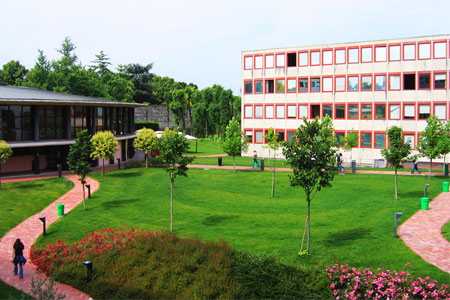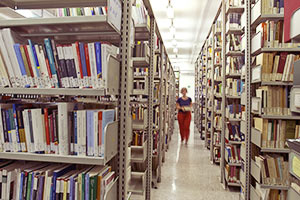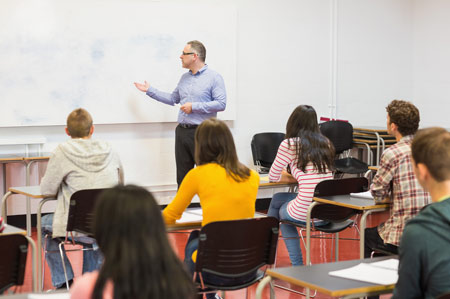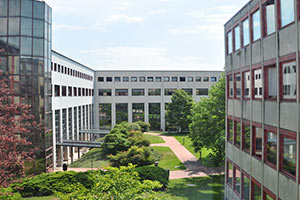Program
Students are strongly recommended to consult the Italian version of the program, where several key concepts are outlined in more depth. The following list contains the Italian titles of the manual chapters that are assigned to be studied.
FIRST PART
1. L’alba del Rinascimento a Firenze. Contesto storico (manuale, 2012, vol. 2, pp. 14-19).
Filippo Brunelleschi: profilo, principi architettonici (prospettiva e modulo), committenze (pp. 20-31). Donatello: primo periodo fiorentino, soggiorno padovano, ultimo periodo (pp. 32-35; 38-39). Masaccio: linguaggio pittorico, opere e confronti (pp. 42-47).
2. La prima metà del Quattrocento in Toscana.
Beato Angelico, Filippo Lippi, Domenico Veneziano, Andrea del Castagno, Paolo Uccello, Benozzo Gozzoli. Manuale, 2012, pp. 52-61.
La scultura toscana del primo Rinascimento (Lorenzo Ghiberti, Iacopo della Quercia). Manuale, pp. 68-73.
L’edificio ideale di Leon Battista Alberti; i trattati (*da integrare con appunti delle lezioni e voce wikipedia). Manuale pp. 74-77 e pp. 80-81.
3. La pittura fiamminga e l’Italia.
Jan van Eyck, Rogier van der Weyden e gli altri pittori fiamminghi citati.
Manuale, 2012, pp. 64-67.
4. Piero della Francesca, profilo e opere. Manuale p. 86, pp. 92-99.
5. La Firenze medicea e l’Italia centro-meridionale.
Firenze: Verrocchio, Pollaiolo, Botticelli (manuale pp. 108-114 e pp. 126-127).
Umbria e Roma: Perugino, Signorelli (manuale pp. 115-117 e pp. 120-121).
L’Italia meridionale: Antonello da Messina (manuale pp. 122-125).
6. Il Rinascimento nell’area veneta.
Fra Tardogotico e Rinascimento (Rinascimento “umbratile”): Jacopo Bellini
Conseguenze della presenza di Donatello a Padova. Andrea Mantegna, Giovanni Bellini, (manuale pp. 131-135; pp. 138-141; pp. 144-148; Gentile Bellini e Carpaccio pp. 149-150).
SECOND PART
7. Il Cinquecento. Contesto storico e concetti principali: Maniera moderna e Manierismo (manuale pp. 175-181).
Bramante a Milano e Roma (pp. 184-191). Leonardo da Vinci (pp. 194-199; pp. 202-204; pp. 206-207). Michelangelo (pp. 210-223; pp. 226-230). Raffaello (pp. 233-245; 248-249).
Giorgione, Tiziano (pp. 252-261; pp. 264-270).
Lorenzo Lotto (pp. 276-279).
Correggio (pp. 280-283).
8. Il Manierismo.
Manierismus: concetto storiografico, sua formulazione tra Otto e Novecento (*da integrare con appunti delle lezioni e voce wikipedia, con particolare evidenza alla diaspora degli artisti conseguente al sacco di Roma del 1527).
Prima fase a Firenze: Andrea del Sarto, Rosso Fiorentino, Pontormo (manuale, 2012, pp. 289-294).
Lo stile clementino: Giulio Romano a Roma e a Mantova, Parmigianino. Manuale, 2012, pp. 295-299.
Seconda fase a Firenze: Bronzino, Cellini, Giambologna (pp. 302-303).
Il Cinquecento in Europa, Dürer tra Germania e Italia (pp. 314-319).
Veneto: Tintoretto e Veronese (pp. 327-335); Bassano (pp. 336-337); Sansovino e Palladio (pp. 338-345).
Note: Students are advised to organize their study process by postponing the introductory chapter on the Baroque (as mentioned in point 12) and instead beginning with the study of post-Tridentine art and Carracci (as indicated in point 10). To this latter part, they should add pp. 352-354 (as indicated in point 10 as well).
9. Arte post-tridentina. Contesto e artisti (manuale, 2012, pp. 352-354). L’Accademia dei Carracci a Bologna e Annibale Carracci a Roma (pp. 377-381). Il classicismo a Roma dopo i Carracci (pp. 386-388).
(*Supplement this part with the chapter about Poussin and Lorrain “Sviluppi del classicismo”, found in the handouts and taken from Arte nel tempo, vol. 2, ed. by P. De Vecchi, E. Cerchiari, Bompiani).
10. Caravaggio. Profilo e opere (manuale pp. 391-395; pp. 400-403). L’eredità della pittura di Caravaggio (pp. 404-405).
11. Il Barocco. Contesto (manuale pp. 372-376).
Bernini e Borromini (pp. 410-429). La pittura barocca, l’opera di Pietro da Cortona (pp. 438-443). Guarini e Longhena (pp. 430-434).
12. La pittura europea nel Seicento. Contesto e protagonisti in Francia, Spagna, Fiandre, Province Unite (manuale pp. 453-457), Velázquez (pp. 460-461).
Rubens, profilo e opere (p. 453, p. 456).
Inigo Jones e il neopalladianesimo (*da integrare con appunti delle lezioni e voce wikipedia).
13. Il Rococò. Caratteristiche e centri (manuale pp. 472-481).
Il vedutismo (pp. 487-489). Tiepolo, profilo, Würzburg (pp. 490-493) e il decennio spagnolo.
14. Il Neoclassicismo. Contesto storico-culturale (manuale, 2012, vol. 3, pp. 13-16; pp. 18-19, dispensa in copisteria). Winckelmann (p. 20). David, profilo (pp. 21-25). Canova, profilo (pp. 26-31). Inquietudini preromantiche: Füssli e Goya (pp. 63-67).
Topics for Erasmus students
First part
1. Brunelleschi and his architectural principles
2. Donatello: itinerary, the two florentine periods and the sojourn in Padua with main works
3. Masaccio
4. Leon Battista Alberti: treatises and works
5. Mantegna
6. The Flemish school
7. Piero della Francesca
8. Giovanni Bellini
9. Antonello da Messina
10. Firenze and Lorenzo il Magnifico, historical context, Botticelli, Verrocchio, Pollaiolo
Second part
11. Leonardo
12. Michelangelo
13. Raffaello
14. Giorgione and Tiziano
15. Mannerism: concepts and artists
16. After Counter-Reformation, Carracci, Annibale Carracci in Rome and Classicism
17. Caravaggio
18. Bernini and main characteristics of Baroque art
19. The 17th century protagonists in Europe, with reference to geography and history: Poussin, Rubens, Rembrandt, Vermeer, Velasquez
20. Rococo in Europe and Italy with reference to geography and history: general style characteristics and main artists
21. Tiepolo and Canaletto
22. Neoclassicism and Canova
The test consists in
- a questionnaire composed of 5 questions on topics relating to the period from the early Renaissance to the 15th century
- a second questionnaire, also made up of 5 questions on topics relating to the period from the 16th century to Neoclassicism
In the same exam (4 hours long), students may choose to be tested on only the first questionnaire or on both questionnaires . If they choose to split the test into two sections, they must follow a set order: a first exam focused on the questionnaire covering the first period (from the early Renaissance to the 15th century) and, only if they pass that exam, a subsequent one focused on the questionnaire covering the timespan from the early 16th century to Neoclassicism.
The exam questions may concern an author’s profile (ex. Donatello and his periods - for instance Donatello in Padua - Bernini, Canova) or the context in which he worked, or more general concepts (ex. Maniera Moderna, Mannerism, Baroque, Neoclassicism, with examples). Some questions might also focus on the profiles of artists of “lesser” standing (ex. Botticelli and Laurentian age, Verrocchio and Pollaiolo in comparison), or single works of art (ex. Ghent Altarpiece, Cappella Brancacci, Caravaggio in San Luigi dei Francesi, Cappella Cornaro). The questions consist of multiple components in order to suggest a possible “progression” among arguments or facilitate thematic links, thereby pushing students to go beyond flat, superficial summaries of the material.







